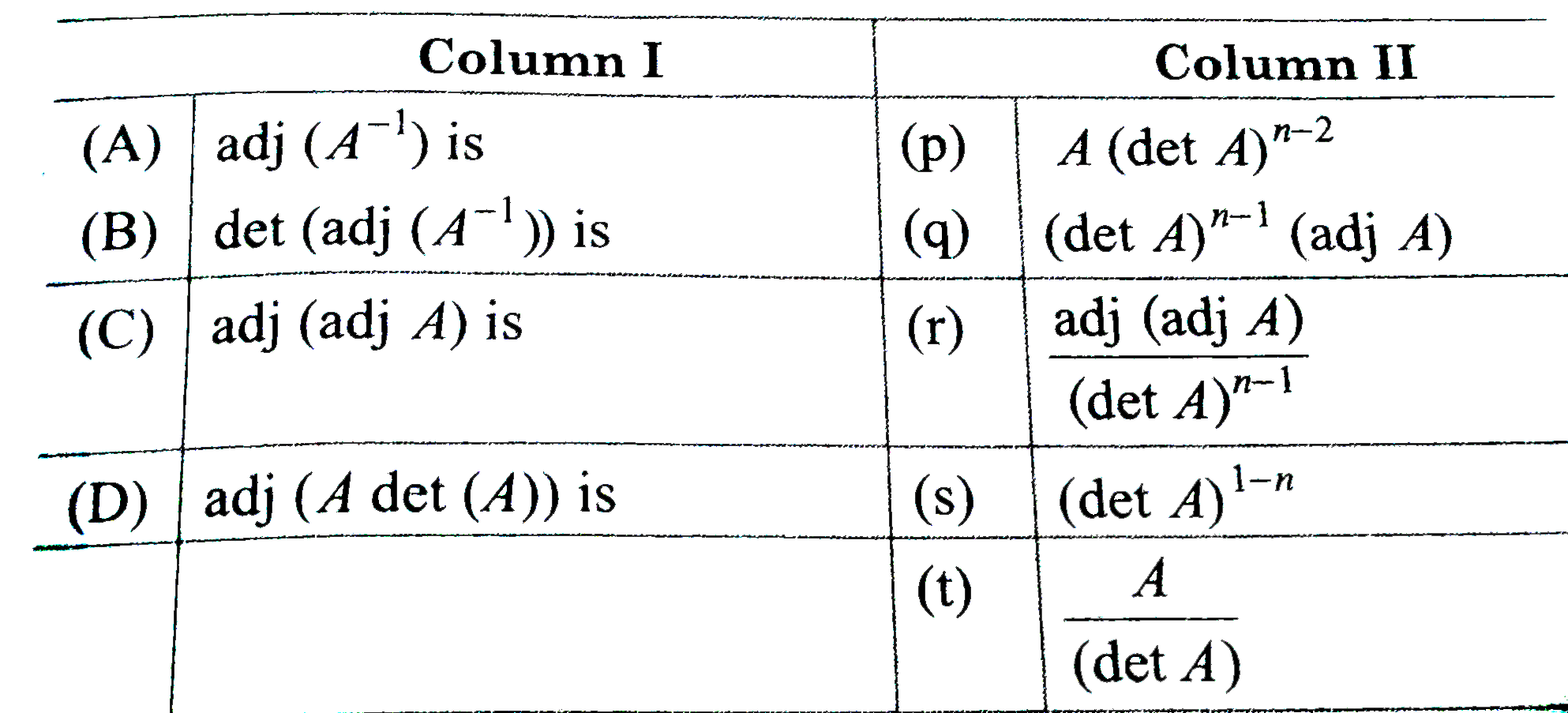[ If B is adjoint of matrix A and B⊤B−1=A then ( where B is non singular matrix) ],[ (a) B is symmetric matrix (b) det.(B)=1 (c) A is skew symmetric matrix (d) adj.B=A]
Step by step video & image solution for [" If "B" is adjoint of matrix "A" and "B^(TT)B^(-1)=A" then "(" where "B" is non singular matrix) "],[[" (a) "B" is symmetric matrix "," (b) det."(B)=1],[" (c) "A" is skew symmetric matrix "," (d) "adj.B=A]] by Maths experts to help you in doubts & scoring excellent marks in Class 11 exams.
Similar Questions
Knowledge Check
- Question 1 - Select One or More
If A is a non-singular matrix, then
AA−1 is a non-singular matrix, thenBA−1is skew-symmetric if A is symmetricC∣∣A−1∣∣=|A|D∣∣A−1∣∣=|A|−1 - Question 2 - Select One
If B is a non singular matrix and A is a square matrix, the det(B−1AB)=
Adet(A−1)Bdet(B−1)Cdet(A)Ddet(B) - Question 3 - Select One
If A is a non-singular matrix, then A(adj.A)=
Aidentity matrixBnull matrixCscalar matrixDdiagonal matrix
Let B is adjoint of matrix A , having order 3 and BTB1=A (where B is non singular) then tr(A+B)4 is (where tr(A) is sum of diagonal elements of matrix A)
View SolutionIf A=[1203] is written as B+C , where B is a symmetric matrix and C is a skew-symmetric matrix, then find B
View SolutionIf is a non-singular matrix, then det (A1)=
View SolutionIf B is a non-singular matrix and A is a square matrix, then the value of det (B−1AB) is equal to :
View SolutionIf A is non-singular matrix and (A+I)(A−I)=0 then A+A−1= . . .
View Solution

